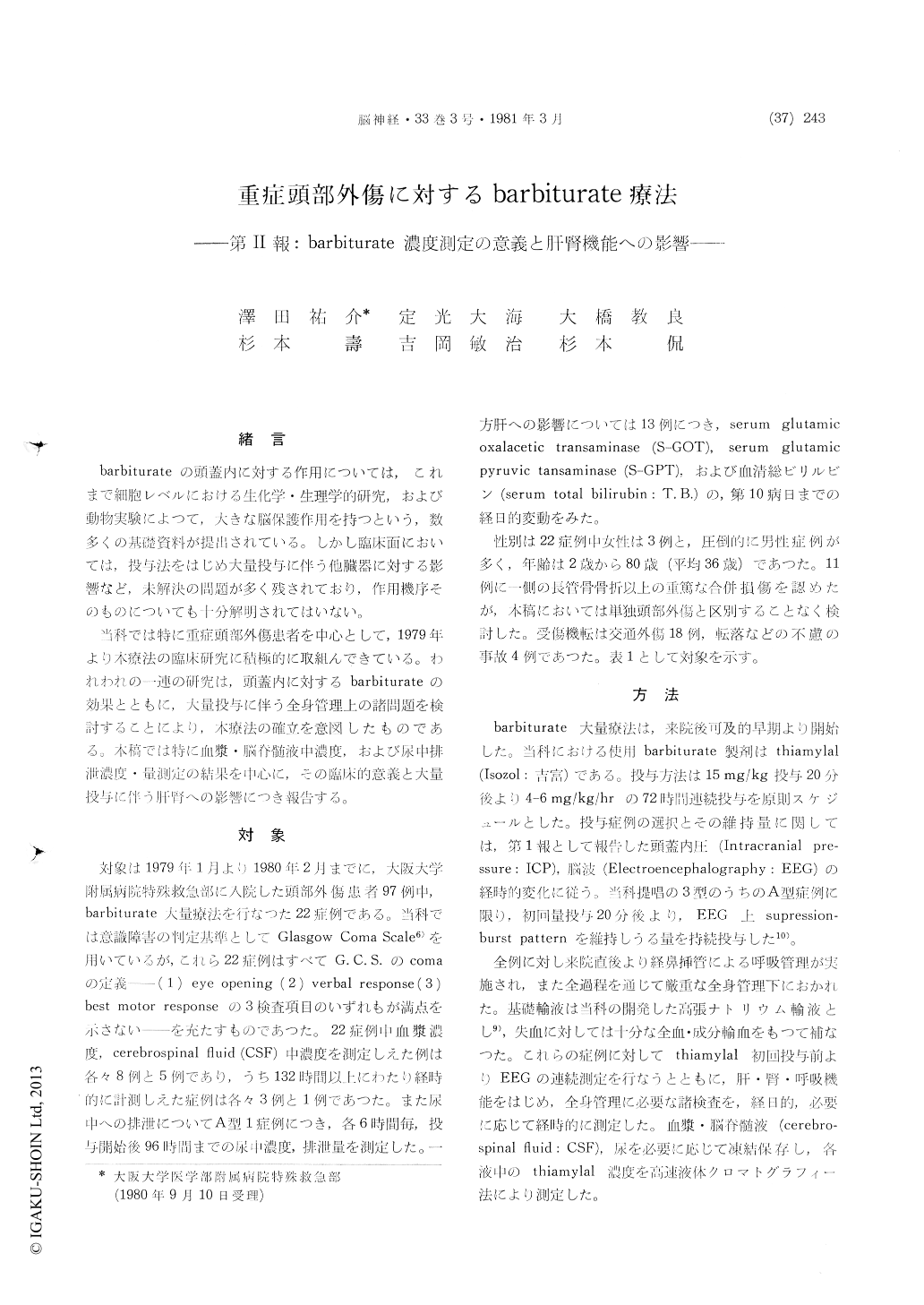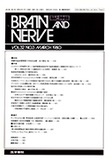Japanese
English
- 有料閲覧
- Abstract 文献概要
- 1ページ目 Look Inside
緒言
barbiturateの頭蓋内に対する作用については,これまで細胞レベルにおける生化学・生理学的研究,および動物実験によつて,大きな脳保護作用を持つという,数多くの基礎資料が提出されている。しかし臨床面においては,投与法をはじめ大量投与に伴う他臓器に対する影響など,未解決の問題が多く残されており,作用機序そのものについても十分解明されてはいない。
当科では特に重症頭部外傷患者を中心として,1979年より本療法の臨床研究に積極的に取組んできている。われわれの一連の研究は,頭蓋内に対するbarbiturateの効果とともに,大量投与に伴う全身管理上の諸問題を検討することにより,本療法の確立を意図したものである。本稿では特に血漿・脳脊髄液中濃度,および尿中排泄濃度・量測定の結果を中心に,その臨床的意義と大量投与に伴う肝腎への影響につき報告する。
In the previous article, we reported that the thimylal administration in patients with severe head injury produced three types of ICP alteration patterns relating closely to prognosis and only cases falling into type A showed good prognosis. In this series, we studied only type A cases. In 22 severelyhead injured persons, we could distinguish 7 A type patients from others with EEG monitoring after administration of 15mg/kg thiamylal. We mainly investigated the clinical significances of measuring the plasma thiamylal and CSF thiamylal levels and simultaneously the influences upon the functions of liver and kidney were studied.
After administration of 15mg/kg thiamylal, the plasma thiamylal levels decreased rapidly in a hyperbolic pattern from about 60μg/ml (2 minutes after administration) to 10μg/ml (60min.). On the other hand, CSF thiamylal levels gradually in-creased and showed the highest levels at 60 minutes after administration. But the degree of CSF thia-mylal levels were extremely low compared to the simultaneous plasma levels and they never exceeded 6.0μg/ml. We could find little beneficial imforma-tion from the measurement of thiamylal levels and could not find any relationships between the CSF and blood thimylal levels and clinical status of our patients. The measurement of the plasma and CSF thiamylal levels have little clinical significance.
In order to study the effects of large dose thia-mylal administration on liver and kidney functions, serum and urine osmolality, free water clearance as well as the fractional excretion of thiamylal in urine were measured simultaneously. Serum tran-saminase levels were also followed.
1.53×104 mgthiamylal were administered during the first 72 hours in Case 3422. But the excreted thiamylal was 3.48×10mg, only 0.23% of total administrated dose. Simultaneously measured free water clearance remained below -0.5ml/min. Thus from the free water clearance, one of the most reliable parameter in prediction the onset of renal failure before the development of oliguic state, large dose administration of thiamylal does not seem to give any harmful influences upon the kidney function.
On the other hand, there were many cases with abnormally high levels of total-bilirubin and GOT. Abnormally high levels of these two parameters were seen in severely injured patients, however, they, do not seem to be related to thiamylal large dose.
We concluded that large dose thiamylal admin-istration under our present schedule does not have any adverse influences on either liver or kidney functions.

Copyright © 1981, Igaku-Shoin Ltd. All rights reserved.


